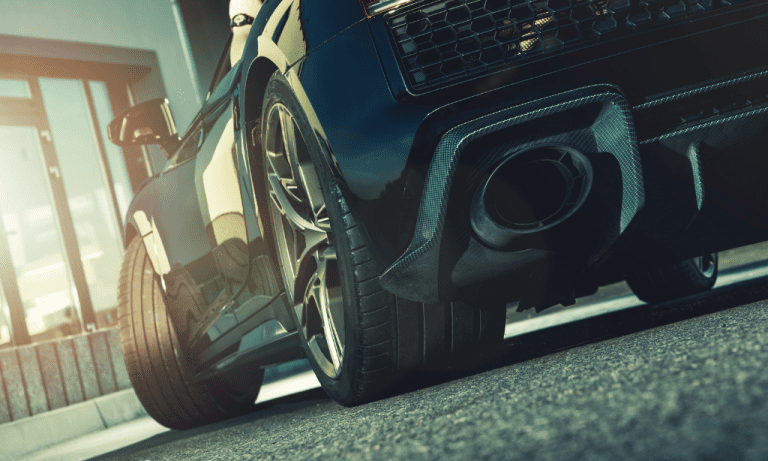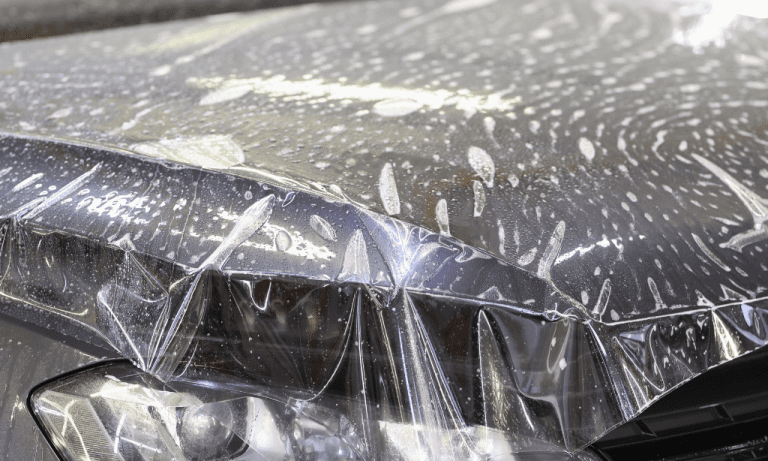Can Bondo Get Wet? (Here Is The Answer)
Bondo is a popular brand of automotive body filler known for its ability to repair dents, dings, and other imperfections on vehicle surfaces. When working with Bondo, one common concern is its vulnerability to water exposure. Many enthusiasts and DIYers wonder whether Bondo can withstand being wet without compromising its performance and durability.
In this article, we will explore the impact of water on Bondo fillers and provide insights into its behavior when exposed to moisture. We will address questions regarding Bondo’s water resistance, its ability to retain strength when wet, and the proper precautions to take when working with Bondo in wet or humid conditions.
Understanding how Bondo interacts with water is essential for achieving reliable and long-lasting repairs. Whether you’re considering using Bondo for automotive restoration or tackling other projects that may involve water exposure, this article aims to shed light on Bondo’s response to moisture and offer guidance for optimal usage and maintenance.
Why Doesn’t Bondo Get Wet Easily?
Bondo, specifically Bondo body fillers, is designed to have inherent water resistance and does not get wet easily. This is due to the composition and properties of the product. Here are a few reasons why Bondo doesn’t readily absorb water:
1. Polyester Resin Base
Bondo body fillers are primarily made from a polyester resin base. Polyester resins have hydrophobic properties, meaning they repel water. This characteristic helps Bondo resist water absorption and prevents it from getting saturated when exposed to moisture.
2. Fillers and Reinforcements
Bondo formulations often include fillers and reinforcements such as fiberglass or talc. These materials help improve the strength and stability of the Bondo, but they also contribute to its water resistance. The fillers and reinforcements act as barriers, reducing the permeability of the Bondo to water.
3. Cross-Linking Reaction
When Bondo is mixed with a hardener, a chemical reaction called cross-linking occurs. This reaction forms a three-dimensional network of polymer chains, creating a solid and water-resistant matrix. Once fully cured, the cross-linked structure of Bondo further enhances its ability to repel water.
4. Surface Smoothness
When Bondo is properly applied and sanded, it creates a smooth surface that is less prone to water infiltration. The smoothness minimizes the presence of microscopic pores and imperfections that could allow water to penetrate the Bondo.
How Does Bondo Remain Dry?
Bondo remains dry primarily due to its composition and the way it reacts with moisture. Here are a few key factors that contribute to Bondo’s ability to stay dry:
1. Hydrophobic Properties
Bondo body fillers are formulated with hydrophobic materials, which means they repel water. The primary ingredient, polyester resin, exhibits hydrophobic characteristics, preventing water from easily penetrating or being absorbed by the filler. This property helps Bondo remain dry even in the presence of moisture.
2. Curing Process
When mixed with a hardener, Bondo undergoes a chemical reaction known as curing. During this process, the liquid filler transforms into a solid state, forming a hardened surface. Once cured, the Bondo develops a barrier that resists water infiltration, helping to keep it dry.
3. Surface Smoothness
Proper surface preparation and application techniques are crucial for Bondo to remain dry. When Bondo is applied and sanded correctly, it creates a smooth surface that minimizes the presence of microscopic pores or imperfections. This smoothness reduces the chances of water seeping into the Bondo and helps maintain its dry state.
4. Sealants and Protective Coatings
In certain applications, additional sealants or protective coatings can be applied over Bondo to enhance its resistance to water. These sealants act as an extra layer of defense against moisture, further ensuring that the Bondo remains dry and protected.
Does Bondo Get Wet Over Time?
Bondo body fillers are designed to have a degree of water resistance, but over time, prolonged exposure to moisture can potentially compromise the filler. While Bondo does not readily absorb water, certain factors can contribute to its vulnerability to moisture:
1. Degradation of Bondo Surface
If Bondo is not properly sealed or protected, water can gradually seep into the surface over time. This can occur when the topcoat or protective layer becomes damaged, cracked, or worn out, allowing water to reach the Bondo underneath.
2. Moisture and Temperature Changes
Fluctuations in temperature and humidity levels can affect the performance of Bondo. Expanding and contracting due to environmental changes can cause stress on the filler, potentially leading to cracks or weakening of the bond. In regions with high humidity or where temperature changes are frequent, the risk of moisture-related issues may be higher.
3. Inadequate Surface Preparation
Improper surface preparation before applying Bondo, such as not completely removing moisture or contaminants from the repair area, can compromise the integrity of the bond. Moisture trapped beneath the Bondo layer can lead to delamination or weakening over time.
To mitigate the risk of Bondo getting wet or compromised over time, consider the following preventive measures:
1. Proper Surface Preparation
Thoroughly clean and dry the repair area before applying Bondo. Ensure there is no residual moisture, oil, or contaminants that could interfere with the bond.
2. Adequate Sealing and Protection
Apply suitable primers, sealants, or topcoats to the Bondo repair to create an effective barrier against moisture. Regularly inspect and maintain the protective layer to address any cracks or damages promptly.
3. Limit Exposure to Water
Avoid subjecting Bondo repairs to continuous or intense water exposure. Protect the repaired area from excessive moisture, such as avoiding prolonged contact with water or harsh weather conditions.
What Happens When Bondo Gets Wet?
When Bondo gets wet, several potential consequences can occur, depending on the extent of the exposure and the specific circumstances. Here are some possible outcomes when Bondo comes into contact with water:
1. Softening or Swelling
Bondo is primarily composed of polyester resin, which is not highly resistant to water. When exposed to moisture, Bondo can absorb water and become soft or swollen. This can result in a loss of structural integrity and compromise the bond between the filler and the substrate.
2. Delamination
If water seeps into the Bondo and reaches the underlying surface, it can weaken the bond between the filler and the substrate. Over time, this can lead to delamination, causing the Bondo to detach or peel away from the surface it was applied to.
3. Cracking or Deterioration
Water exposure, especially in the presence of temperature fluctuations, can cause the Bondo to expand and contract. This stress can lead to cracking or deterioration of the filler over time. Cracks in the Bondo can allow more water to penetrate, exacerbating the problem.
4. Rust or Corrosion
If Bondo is used on metal surfaces and it gets wet, there is a risk of water being trapped between the Bondo and the metal. This trapped moisture can lead to rust or corrosion, which can further compromise the structural integrity of the repair.
What If Bondo Gets Caught In The Rain?
If Bondo gets caught in the rain, it is important to take prompt action to minimize potential damage. While Bondo is not highly water-resistant, a brief exposure to rain alone may not cause significant harm if addressed quickly. Here are steps to follow if Bondo gets wet due to rain:
1. Remove Excess Water
Use a clean, dry cloth or towel to gently wipe off any standing water or excess moisture from the Bondo surface. Avoid rubbing too vigorously to prevent further damage.
2. Dry the Area
Allow the Bondo repair area to air dry naturally, preferably in a well-ventilated location. Avoid using heat sources such as hair dryers or heat guns, as excessive heat can distort or damage the Bondo.
3. Assess the Damage
Inspect the Bondo repair for any visible signs of damage, softening, swelling, or delamination. Pay attention to areas where the water may have penetrated, such as cracks or gaps in the protective layer.
4. Address Damaged Areas
If you notice any significant damage or deterioration, it may be necessary to remove and replace the affected Bondo. Depending on the extent of the damage, you may need to sand down the damaged area, reapply Bondo, and properly seal and protect the repair.
5. Monitor for Further Issues
Keep an eye on the repaired area in the following days to observe any changes or signs of ongoing damage. Look out for softening, swelling, cracking, or other indications of water-related issues. If you notice any worsening conditions, consider seeking professional assistance to address the problem effectively.
Can You Expose Unfinished Bondo To The Rain?
Exposing unfinished Bondo to the rain is generally not recommended. Unfinished Bondo refers to Bondo that has been applied but has not yet been properly sealed, primed, or protected with a topcoat. Here’s why it’s best to avoid exposing unfinished Bondo to rain:
1. Absorption of Water
Unfinished Bondo is more susceptible to water absorption compared to a properly sealed and protected Bondo surface. The polyester resin in Bondo can absorb water, leading to softening, swelling, or potential delamination of the filler. This can compromise the structural integrity of the repair.
2. Incomplete Curing
Unfinished Bondo may not have fully cured or reached its maximum strength. Exposing it to rain or moisture can interfere with the curing process, potentially causing the filler to become weak or brittle. It’s important to allow Bondo to fully cure before subjecting it to water or harsh weather conditions.
3. Surface Damage
Rainwater can create water spots, streaks, or uneven drying patterns on unfinished Bondo surfaces. These blemishes can affect the final appearance of the repair and may require additional sanding or refinishing to achieve a smooth finish.
To protect unfinished Bondo from rain or moisture:
1. Provide Shelter
If possible, keep the Bondo repair area in a covered or sheltered location to prevent direct exposure to rain. This can help avoid water contact and minimize the risk of damage.
2. Use Protective Covers
If shelter is not available, consider using plastic or waterproof covers to shield the Bondo repair from rain. Ensure that the covers are secured properly to prevent water from seeping in.
3. Complete the Finishing Process
Finish the Bondo repair by properly sealing, priming, and applying a suitable topcoat or protective layer once the Bondo has fully cured. This will provide a barrier against moisture and enhance the longevity of the repair.
Is Bondo Waterproof?
Bondo, or more specifically, Bondo body fillers, are not inherently waterproof. While Bondo has some level of resistance to water, it is not designed to be completely impervious to moisture. Here’s why:
1. Composition: Bondo body fillers are primarily made of polyester resin, which is not naturally waterproof. Polyester resin can absorb water to some extent, which can lead to softening, swelling, or weakening of the Bondo over time.
2. Pores and Permeability: Bondo can have microscopic pores or imperfections on its surface, which can allow water to penetrate if not properly sealed or protected. Water can gradually seep into these pores, leading to potential issues such as softening, delamination, or degradation of the Bondo repair.
3. Protective Measures: To enhance the water resistance of Bondo, it is crucial to properly seal, prime, and apply appropriate topcoats or protective layers over the Bondo surface. These additional coatings create a barrier against moisture and help improve the overall waterproofing properties of the repair.
While Bondo is not inherently waterproof, it is important to note that the degree of water resistance can vary depending on factors such as the specific product used, the application technique, and the protective measures taken. Applying sealants, primers, and topcoats, as well as following manufacturer guidelines, can help enhance the water resistance and durability of Bondo repairs.
For applications that require a higher level of waterproofing, such as in areas prone to constant exposure to water or in marine environments, it may be necessary to explore alternative products specifically designed for those conditions.
Overall, while Bondo can provide effective repairs for automotive and other applications, it is important to take precautions to protect Bondo repairs from prolonged or intense water exposure to maintain their integrity and longevity.
How Can I Prevent Bondo From Getting Wet?
Preventing Bondo from getting wet is important to maintain its integrity and durability. Here are some measures you can take to minimize the risk of Bondo coming into contact with water:
1. Proper Surface Preparation
Ensure that the surface to be repaired with Bondo is clean, dry, and free from any moisture or contaminants before applying the filler. Remove any existing rust, paint, or debris that could interfere with the bond. Moisture trapped beneath the Bondo layer can lead to issues over time.
2. Adequate Sealing
Apply a suitable primer or sealer to the repaired area before applying Bondo. The primer helps create a barrier between the Bondo and the underlying material, reducing the risk of moisture penetration. Follow the manufacturer’s recommendations regarding the specific primer or sealer to use.
3. Complete the Finishing Process
Once the Bondo has fully cured, apply an appropriate topcoat or protective layer to further seal and protect the repair. This can include automotive paint, clear coat, or other sealants designed to resist water. The topcoat acts as an additional barrier against moisture, helping to prevent water from reaching the Bondo.
4. Regular Inspection and Maintenance
Periodically inspect the Bondo repair for any signs of damage, cracks, or wear in the protective layer. Address any issues promptly by repairing or refinishing the affected areas to maintain the seal and prevent water from entering.
5. Avoid Prolonged Water Exposure
Take precautions to minimize prolonged exposure to water or moisture. For example, park your vehicle in covered or sheltered areas, avoid driving through deep puddles or standing water, and clean the Bondo repair gently without using excessive water pressure.
6. Consider Alternative Materials
In situations where water exposure is a significant concern, such as in marine or watercraft applications, consider using alternative materials specifically designed for those environments. There are marine-grade fillers and epoxies available that offer enhanced water resistance.
Is Rain The Reason Why My Bondo Is Sticky?
Rain itself is not typically the direct cause of Bondo becoming sticky. Bondo body fillers are designed to cure and harden when exposed to air, not moisture. However, high humidity levels or excessive moisture in the air can affect the curing process and the performance of Bondo, leading to a sticky or tacky texture. Here are a few reasons why your Bondo may be sticky:
1. High Humidity
In humid environments, the excess moisture in the air can slow down the curing process of Bondo. The moisture can prevent the filler from fully hardening, resulting in a sticky or tacky surface.
2. Improper Mixing
Incorrectly mixing the Bondo components can affect its curing properties. If the resin and hardener are not properly blended in the correct ratio, it can lead to an incomplete cure, resulting in stickiness.
3. Insufficient Drying Time
Bondo requires adequate drying time to fully cure. If the Bondo repair was not allowed sufficient time to dry before it was exposed to moisture, such as rain, it can hinder the curing process and leave the surface sticky.
4. Application Thickness
Applying Bondo too thickly in one layer can hinder proper curing. Thicker applications take longer to dry and can trap moisture within the filler, causing stickiness.
To address sticky Bondo:
1. Allow Sufficient Drying Time
Ensure that the Bondo repair has ample time to dry and cure. Follow the manufacturer’s instructions regarding the recommended drying times for the specific Bondo product you are using.
2. Sand and Reapply
If the Bondo remains sticky even after adequate drying time, consider sanding down the sticky layer and reapplying a new layer of properly mixed and measured Bondo.
3. Control Humidity
If high humidity is a persistent issue, consider working in a controlled environment with proper ventilation or using dehumidifiers to reduce moisture levels during the curing process.
4. Double-check Mixing
Ensure that you are correctly mixing the Bondo components in the recommended ratio. Follow the manufacturer’s instructions carefully to achieve a proper cure.
- Choosing The Right 2016 Ram 1500 Truck Bed Cover - June 15, 2025
- Choosing The Right 2014 Ram 1500 Truck Bed Cover - June 15, 2025
- Truck Tool Box And Bed Cover: The Ultimate Guide To Protecting Your Gear - June 15, 2025




